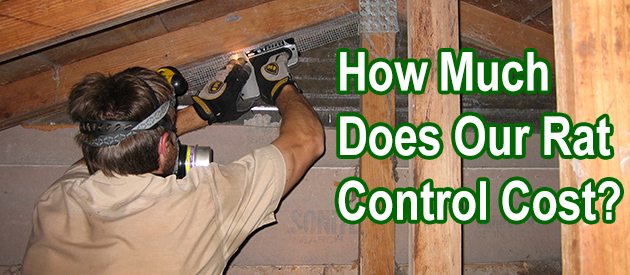Saint Lucy County, Port St. Lucie Rat Control Situation:
Hi there, I'm glad I found your website, its been pretty informative, and helpful in reassuring me a bit. Ok, so me and my boyfriend just moved into a rental house 2 months ago, and we've been hearing scuttling in the ceiling crawl space, and I've noticed when I turned on the oil heat, that the odor that comes out of the ducts with the heated air smells like dead rats and urine, and every time we had the oil heat on at night, I would wake up with a slight feeling of throat irritation and like my nasal passages hurt, but since the summer we haven't been running the oil, but I dread when winter comes... and the scuttling continues. Well I went up into the crawl space last night, after we had a talk with the property manager, and he assured us he would be out and take a look and fix it, he didn't, anyways, it was easier for me to crawl up, as my boyfriend is 6'3" and would be bent like a hairpin, I suited up as you suggested, latex gloves, full respirator, safety glasses, headlamp, camera and flashlight, even a shower cap to protect from gunk falling on my head. I found extensive evidence of rats or squirrels, poo, tunnels, chewed stuff etc.,. took loads of pics to show to the property manager. From what I've seen and smelt, I am thinking that this will cost the owner of the house a tidy sum to clean up, because I am sure this is very dangerous health-wise to live in, and this type of condition should not be allowed in a rental home or any home. This may sound like a dumb question, but I was wondering how do I convince the owner and property manager this needs to be cleaned up ASAP, professionally. Also how would the rat urine etc. get cleaned out of the ducts in an oil heated home? That seems like it would be tough to do properly and safely. Any advice or info you could give me would be greatly appreciated.
Port St. Lucie Rat Control Tip of The Week
How Deep Do Rats Dig Holes Or Burrow Under Houses?
Asides from being a very smart animal with a high sense of adaptability, rats are keen diggers. With their dexterous paws and strong teeth, they can chew through plastic, wood, and even aluminum. This clearly shows how much of a good digger these rodents are. Also, if you have holes around your house, these rodents might be responsible for creating them.
Maybe you have rats digging holes or burrows under your house and you have always wanted to know how deep these holes are. The fact is these excellent diggers can dig holes as long as 3 feet and as deep as 18 inches. This digging skill allows them to create deep burrows and holes under your home
Due to their smart nature, rats don't just dig burrows and holes blindly. They dig with plans and prepare for the worst-case scenario by creating one or two exit points apart from the entry hole, in case they are attacked by a predator. Therefore, if you see a rat hole or burrow around your house, you must look around to find its exit hole. Unlike the entry hole which is usually clean and free from dirt, rats usually use thatches of grass to conceal their exit holes. This simply means you have to look around carefully to find it.
While examining these holes and burrows, you need to be very careful and avoid moving too close to it. Snakes or any other harmful animal could also be inhibiting the hole. If you have to dig in the hole or make close contact, make sure you are well protected.


